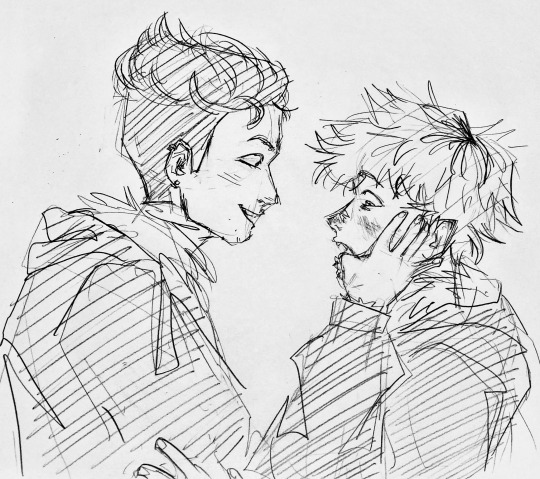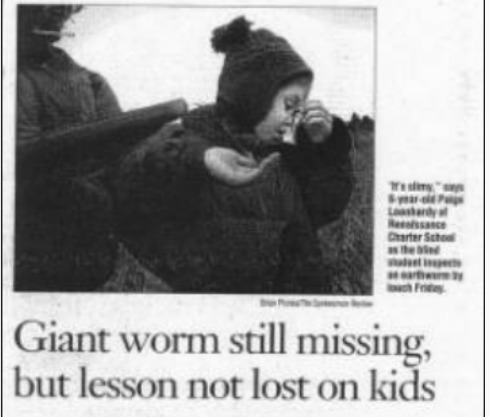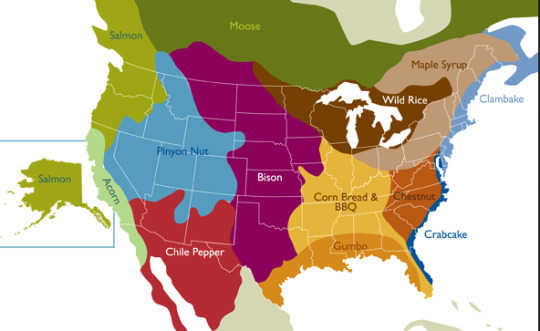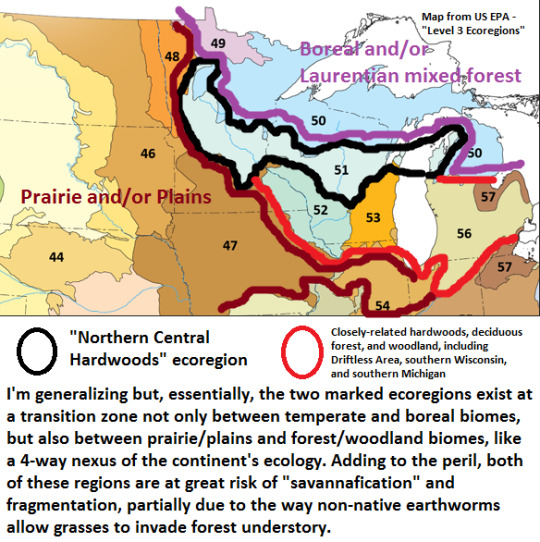#reposting this one because i think it's vital to the ecosystem
Text


"every tooth in your mouth is sharp, holy shit. why have i never noticed that?"
#reposting this one because i think it's vital to the ecosystem#jrwi#the suckening#emizel tucker#theo collins#fizzfangs#lukas gallery
275 notes
·
View notes
Text
i mean it when i say we've gotta bring back askblogs. bring back making character chat posts with poor choice text colors over random backgrounds. bring back blogs dedicated to what outfits you think characters would wear.
fandom is an ecosystem, not a numbers game. these types of blogs/posts/etc still exist in concept, because people still want to make them and they're a great way to get your thoughts of an idea out in a simple format, but most people make them on like tiktok or instagram reels and that's where the problem lies. Those videos don't go anywhere. The format doesn't allow for the discussion to spread through the community and they're less likely to be engaged with in general. And to make them most people have to either show their face or figure out editing software, so the barrier to entry is higher (editing) and/or they have to forfeit an amount of privacy.
those types of posts/blogs are the first rung of the ecosystem. they're the perfect environment for younger members of the fandom to begin safely interacting with the larger community and putting their own thoughts and ideas out there. roleplay is the other major spot for that and those communities are diminishing as well, honestly (if you know of an rp forum board site, cherish it. and if you can make one, make one). they allow younger fans to begin engaging with the source material on a different/deeper level, but still at a very low barrier to entry, and begin conversations with other fans, which also helps them build skills which in turn may encourage them to pursue other avenues within the fandom (fic writing, other formats of askblog - which itself usually leads to art, cosplay, also fic writing, etc). Without those places to build those skills, they might feel discouraged from trying to begin when surrounded by curated people who have built their skills up for years.
And those conversations they foster also in turn help the community, by offering ideas to artists or fic writers to extrapolate on or building community jokes. And that text/blog format specifically is extremely beneficial, because it allows younger members of the fandom to remain anonymous and keep their privacy without concerning themselves with having any platform or having anything attached to them (very important for young fans figuring themselves out and navigating online community spaces for the first time, since they can remove themselves from spaces easily if they decide they don't like it and they're protected, rather than PUTTING THEIR FACE ON THE INTERNET). And those posts they make will spread a lot more into the community since they're in a significantly easier format to be reposted (few people are gonna be reposting tons of random short-form videos versus spamming their instagrams with reposts of 10 random fandom images yoinked from tumblr, or reposting to pinterest or something). Like, don't repost art, at the VERY least don't repost without credit, but also I am not ignorant to the fact that my art is not just the first google image result for "pjo pride" and related searches, but also the 4th, the 6th, the 9th, the 10th, the 11th, etc etc., and pops up in the search results before the official ReadRiordan does simply because people reposted my work more (most with credit, thankfully).
For fandom to be a community, it needs to perpetuate itself. There needs to be engagement with one another and conversation. If that bottom rung is cut off, then new fans won't be able to grow into the other niches of the fandom, and the fandom will be solely reliant on the source material and die out extremely quickly, and there won't be a community. There's no conversation! There's no reason to stay beyond the original material! But if you don't have points of entry for new fans, they won't have any way to build the skills needed to move into those niches, or engage with the community in a healthy way.
tl;dr: Bring back askblogs and character-based text post blogs. They are vital to fandom ecosystem.
#fandom#long post //#i know many people jest about tumblr posts being reposted often to other social media#but there's a reason for that! because few other social media these days are primarily text-based! and tumblr is a BLOGGING website!#we're built for sharing random essays! which means we have a LOT of word-heavy stuff#that other platforms can really only have in a different format - usually either image or video - due to character limits#and videos - even short form video - is far less engaged with because it takes more time to interact with#and short form videos of this nature ^ are usually only reposted in like. long-form video format compilations#which are pretty equally if not even less frequently interacted with#because most of those other social media platforms dont have good ways to easily share posts en mass like tumblr's reblog function#so even if those posts do get shared they rarely go far and even if they do they dont stick around#i also personally dont think it's coincidental that general fandom attitude shifts occurred circa 2016-2018#around the same time as the major shift away from tumblr due to the bans#anyways if you run one of those types of blogs i respect you immensely#you are underappreciated but you fulfill an important ecological niche#also i know rp blogs are still a thing but theyre much more scarce and rp communities in general are drying up
58 notes
·
View notes
Text
Some responses to Earthworm Discourse:

g u e s s a g a i n
Honestly, though, I still rescue earthworms from sidewalks and have since I was a child in our little informal, weird-girl, after-school bug-club, as I’m sure many of us did and still do. All life has value. (Still feeling confused about the ethical/ecological implications of rescuing non-native worms. When so many United States cities present as sanitized, sterilized, anonymous concrete-asphalt landscapes - covered in manicured non-native grass lawns - are the already-firmly-entrenched non-native earthworms causing much more damage in residential lawns if you save a few, so long as you avoid introducing them to intact ecological sites outside city limits? No pun intended, but that discourse is a whole other can of worms. Discussion for another time.) So I’ve seen some disparaging remarks made about the Moral Character of non-native earthworms, so obligatory statement: Earthworms of course are not villains or actively malevolent. Colonization; Indigenous dispossession; empire; profit-oriented thinking; industrial monoculture; large-scale geoengineering over years to reshape the entirety of the Turtle Island and Latin American landscapes as if they were “bountiful” European farms populated by “familiar and comforting” European species, etc. - earthworms are a physical manifestation of those issues.
-----

[Spokesman Review - 20 November 1999. Andrea Vogt, staff writer.]
Two of the largest and most iconic native earthworms on the continent are actually found west of the Rockies. Shout-out to [a commenter] for explicitly name-dropping the beautiful and alluring Palouse giant earthworm (Driloleirus americanus), a rare and elusive species, one of the earthworm species actually native west of the Rockies (from the Washington-Idaho border in the Inland Northwest). [More on the worm.] It lives in the Palouse Hills; in the nearby Nez Perce Prairie and Lower Clearwater canyon system; and in some sites in Washington’s East Cascades ecoregion. Much of the Palouse has been converted to agriculture, damaging the soil, and the worm was apparently missing for decades until recent encounters confirmed that it’s still alive. The Palouse giant earthworm and the endangered Oregon giant earthworm (Driloleirus macelfreshi) - from prairie-oak woodland of Willamette Valley - are both contenders for the title of “largest native earthworm in North America.”

-----
Excellent info:

-----

Nice to hear some info on boreal environments, thank you @theeclectickoalastudent - This is also how tiger salamanders (Ambystoma mavoritum) - native in North America east of the Great Basin - were artificially introduced to Mediterranean California: People were importing salamander larvae as fishing bait. (Pretty brutal to begin with, if you ask me.) And now the iconic, unique California tiger salamander (Ambystoma californiense) - endemic only to California and which was already endangered - is forced to directly compete to reclaim its own oak woodland and chaparral habitat from its introduced relative. And we can’t let United States “conservation” and land management agencies and institutions off the hook for the obscene and mind-boggling scale of damage they’ve historically done stocking non-native sport fish species in watersheds of the American West, followed by the stocking of non-native crustaceans to feed the fish. (Speaking of non-native species threatening salamanders, I was [just] hyperfixating the other day on how the Mazama newt - endemic only to Crater Lake, Oregon - may soon be driven extinct by the voracious introduced crayfish species Pacifastacus leniusculus.)

-----
Important disclaimer, by the way: I also wanted to clarify something, so I’m reposting some text I recently shared. Regarding the worm post, I wanted to say: [I know some people who have shared “unleash earthworms” posts clearly did so because: fun; irony; joke; etc. (And, yea, I really like imagining invertebrates/writhing creatures as emblems of resistance/anti-imperialism: “We’re worms, we’ve been stepped on for years, we persist! And our reward for submitting to the decay of the soil is to be engulfed in the loving embrace of one million mycorrhyzal fungal tendrils; by submerging ourselves into the soil we are really a s c e n d i n g.”) I was not vauge-posting about y’all. Like I said previously, I think peoples’ hearts are in the right place and I generally like people I meet here in anti-imperialist/ecology-oriented circles. I think that the originators of the most recent iterations of those posts were clearly being playful. My green tea-fueled ranting about Problematic Worm Etiquette is mostly due to: (1) sometimes I get Like That, (2) I’ll concoct any excuse to talk about Great Lakes regional ecology, and (3) I know some - not all - people were taking “release worms!” advice seriously, so figured it be nice to be explicit.]
On that note, regarding earthworm introduction as a means to improve your own access to food (via garden) or food (via using them as fishing bait): I did definitely see some people being serious about this, so it’s worth noting the irony of a well-meaning action which nevertheless deliberately introduces European species, erasing/degrading native ecology, and also resulting in the destruction of Indigenous foodsheds. Reshaping the Earth, remolding the continent, and promoting the physical/literal invasion of a European species in the hopes of making the land more “fruitful” and “bountiful”? In my US and/or Canada? Just as likely as you think.
Really important stuff right here:

(Sugar maple is one of the plant species most susceptible to death when non-native earthworms invade nearby soul. Thank you for sharing this, @aanzheni)
A map of native foodshed regions of Turtle Island/North America, based on a template originally made by ethnobiologist Gary Paul Nabhan, presenting hypothetical “food regions” and reflecting the vital local staple foods.

Sugar maple is important.
I talk too much, but @big-edies-sun-hat said it more tastefully:

--

@nonsensikelly - Thank you for the info. (And yea, earthworms are well-entrenched in temperate North America.)
-----

-----

I really am not a good person to ask. (Though I’d identify some blatantly obvious solutions - Indigenous autonomy and land management; the dismantling of industrial monoculture crop extraction and associated industry; etc.) I’m not a soil scientist, botanist, entomologist, or technical ecologist/biologist (more into environmental geography/history). However, I had your comment in mind when I wrote [this post] about loss of forest understory and savannafication in the Midwest, addressing why it is that so much earthworm research comes from schools/institutions in Minnesota, Wisconsin, Michigan, and Ontario, due partially to the critical ecological importance of the northern central hardwoods forests as a frontline against worm expansion into boreal environments.


@mi-el-lat I know @cedar-glade already responded to you and it’s worth reposting:

also from cedar-glade, but formatted so the link is clickable:
you can get idea about how gray the knowledge of both invasive earthworms and the effects of potentially invasive predators are from many articles out now a days trying to figure out ecological dynamics of earthworms in any shape or form. https://www.inhs.illinois.edu/resources/inhsreports/may-jun00/worm/
Since a lot of invasive earthworm research and dialogue focuses on the Great Lakes region, we’re in luck because Tumblr might have a resident expert so to speak, since I’m pretty sure @starfoozle specializes in Great Lakes-region invasive species. Regarding “What Can Be Done” to rally community effort, for someone with experience in Midwest landscapes specifically involving citizen science and community engagement with ecology, shout-out to @glumshoe.
And if you’ve got questions about botany, soil, and plant ecology generally, these people are much better scientists than me. They know exactly what they’re talking about and I cannot recommend them highly enough: @spatheandspadix / @botanyshitposts / cedarglade, again ... all of whomst also have firsthand experience with plants and ecosystems of the Midwest and Great Lakes.
Sorry for the long post!
148 notes
·
View notes